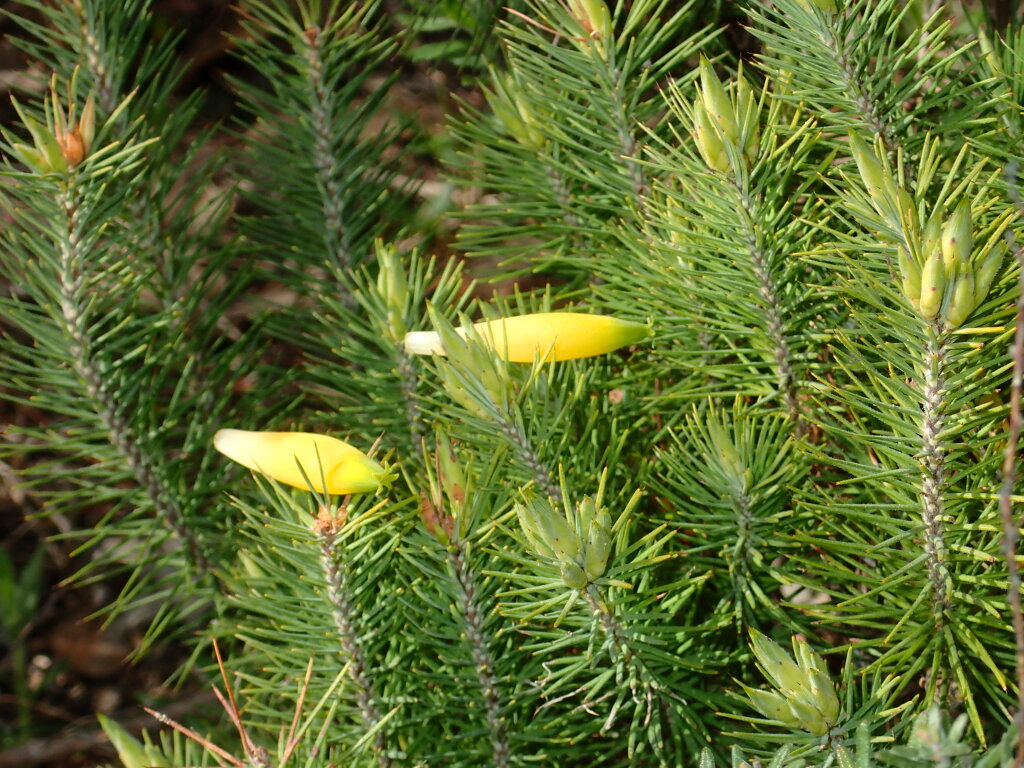Stenanthera
R.Br.Mainly low shrubs. Leaves often discolorous, lower surface with usually branching subparallel-palmate veins. Flowers bisexual, axillary; bracts several, grading in size to 2 large bracteoles immediately subtending sepals; corolla 5-partite, ± cylindric; tube with subbasal tufts or a ring of hairs internally, or with ridge-like outgrowths, rarely glabrous, sometimes externally hairy; lobes triangular to ovate, valvate in bud, erect or with recurved tips, usually bearded inside; anthers oblong to linear, ± exserted from corolla tube but obscured by corolla lobes; filaments distinctly flattened; nectary annular, ± toothed; ovary glabrous, 5-locular with 1 ovule per locule, style glabrous, filiform, equal to or longer than the corolla tube, stigma capitate to globose. Fruit a drupe, with a dry or pulpy mesocarp and a hard endocarp.
3 species endemic to Australia.
Stenanthera has been resurrected following genetic studies finding taxa to be distinct from other species of Astroloma (Puente-Lelièvre et al. 2015). Stenanthera is closely related to Conostephium Benth. from Western Australia. However, Conostephium is distinguished by its tapered corolla which is glabrous or only sparsely hairy on the internal surface of the tube, and has relatively short corolla lobes (Hislop 2013).
 Spinning
SpinningHislop, M. (2013). A taxonomic update of Conostephium (Ericaceae: Styphelioideae: Styphelieae). Nuytsia 23: 313–335.
Puente-Lelièvre, C.; Hislop, M.; Harrington, M.; Brown, E.A.; Kuzmina, M.; Crayn, D.M. (2015). A five-marker molecular phylogeny of the Styphelieae (Epacridoideae, Ericaceae) supports a broad concept of Styphelia. Australian Systematic Botany 28: 368–387.


